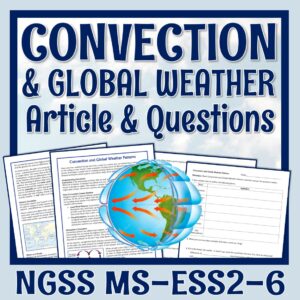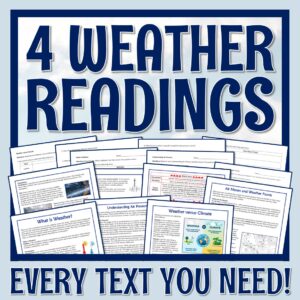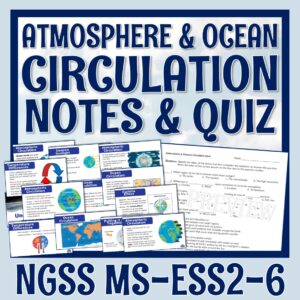Looking for a more RIGOROUS weather activity? Try a WEATHER GRAPHING ACTIVITY! Students will practice SCIENCE GRAPHING SKILLS and answer questions in the CLAIMS-EVIDENCE-REASONING format as they extend their learning about weather!
There are THREE graphing activities included. They can be used together, as three stations, or completely independently from each other. The format of each activity is the same:
Included Weather Graphing Activities:
Through these activities, students will discover that:
Teacher Notes:
Related Standard:





© Flying Colors Science 2025 | Terms & Conditions | Privacy Policy | Disclaimer
| Cookie | Duration | Description |
|---|---|---|
| cookielawinfo-checkbox-analytics | 11 months | This cookie is set by GDPR Cookie Consent plugin. The cookie is used to store the user consent for the cookies in the category "Analytics". |
| cookielawinfo-checkbox-functional | 11 months | The cookie is set by GDPR cookie consent to record the user consent for the cookies in the category "Functional". |
| cookielawinfo-checkbox-necessary | 11 months | This cookie is set by GDPR Cookie Consent plugin. The cookies is used to store the user consent for the cookies in the category "Necessary". |
| cookielawinfo-checkbox-others | 11 months | This cookie is set by GDPR Cookie Consent plugin. The cookie is used to store the user consent for the cookies in the category "Other. |
| cookielawinfo-checkbox-performance | 11 months | This cookie is set by GDPR Cookie Consent plugin. The cookie is used to store the user consent for the cookies in the category "Performance". |
| viewed_cookie_policy | 11 months | The cookie is set by the GDPR Cookie Consent plugin and is used to store whether or not user has consented to the use of cookies. It does not store any personal data. |